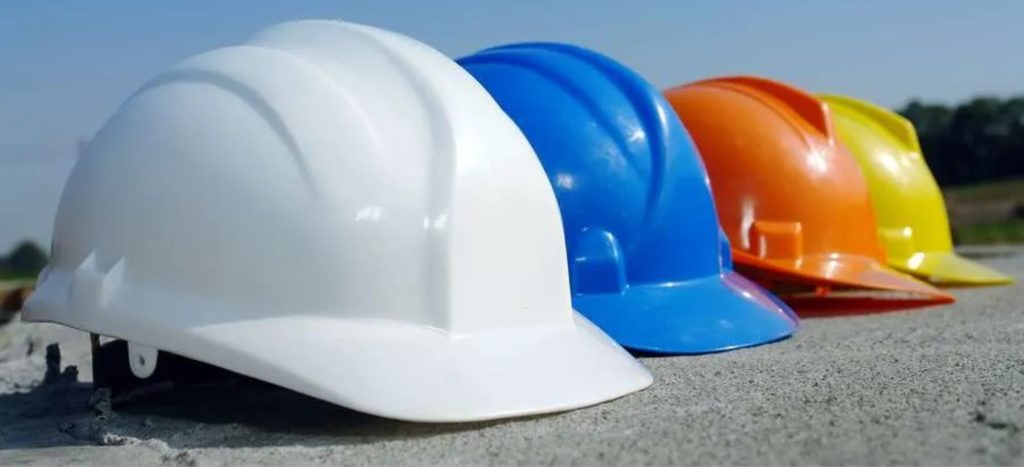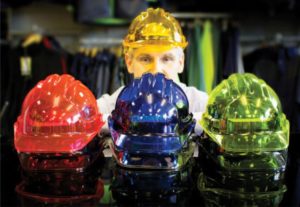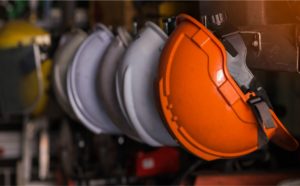 Understanding the differences between various kinds of head protection products available means employers can protect their workers with the best kind of protection.
Understanding the differences between various kinds of head protection products available means employers can protect their workers with the best kind of protection.
Many people are familiar with the hard hat—maybe because it’s been around a long time and has well-known standards that regulate its use. However, there is growing interest in bump caps and also in climbing style helmets. The following interview with James Cooper—3M Global Business Manager for Head & Face Protection—helps clarify some key differences between a hard hat, a bump cap, and a climbing style helmet, as well as the North American standards applicable to these products.
Understanding the differences between various kinds of head protection products available means employers can protect their workers with the best kind of protection. Because climbing style helmets and bump caps are growing in popularity in the head PPE market, alongside hard hats, that has generated a lot of questions about head PPE selection. Cooper helps clarify the differences between products and standards so that safety professionals can make the best PPE choice for their employees.
What is a Hard Hat—Traditionally Speaking?
 Hard hats, also known as protective helmets or protective headwear in the standards, come in many shapes, sizes and styles, but one thing is for sure: American and Canadian standards (ANSI Z89.1 and Z94.1 CSA respectively) for Type I or Type II hard hats clearly outline the necessary performance requirements for a hard hat to help reduce the likelihood of injuries to the head from small tools and similar small objects falling on someone.
Hard hats, also known as protective helmets or protective headwear in the standards, come in many shapes, sizes and styles, but one thing is for sure: American and Canadian standards (ANSI Z89.1 and Z94.1 CSA respectively) for Type I or Type II hard hats clearly outline the necessary performance requirements for a hard hat to help reduce the likelihood of injuries to the head from small tools and similar small objects falling on someone.
Type I hard hats, commonly thought of as conventional hard hats, are required to withstand a certain amount of vertical penetration force. Likewise, they have to absorb a certain amount of impact force.
Type II expands those impact requirements “to include lateral resistance to penetration on the front, back and sides of the helmet…The two hard hat types (I and II) are different products, and people need to make sure that the hard hat they’ve selected for their job does actually meet the applicable requirements and is marked accordingly,” Cooper said.
But the employer or wearer can have a lot of freedom choosing what head PPE style elements are best for their work environment.
“Hard hats are tested for head protection against very specific types of penetration and impact, but there are also a number of elements—either design elements or features—that manufacturers may offer in their hard hat products that might not actually have to do with meeting the standard but do provide comfort, style or convenience when using that type of head protection,” Cooper said.
“For instance, you’ll see hard hats that have brims that run around the helmet. Some may have accessory slots or attachment points built into them,” Cooper said. “There’s
good reason to have those features like convenience in keeping rain, or sunlight, or even debris off of a worker or out of places that would be annoying or distracting…I have even seen cowboy hatshaped hard hats that met the regulations.”
Hard hats are rugged and protective, but they aren’t effective forever. Make sure you inspect your hard hat (per the manufacturer’s instructions) every time you put it on for signs of wear and tear and replace it as necessary.
“Manufacturers should be providing guidance on the lifespan of the hard hat, based on when it was manufactured…Some of the materials used in hard hats can change over time—especially if they’re exposed to UV radiation,” Cooper said. “Hard hats are often molded out of high-density polyethylene or ABS plastics, and those plastics are susceptible to degrading if they’re exposed to a lot of UV radiation such as when worn by a worker who is working outside. Some hard hats provide additional feedback that indicate when a hard hat has been exposed to too much UV.”
What’s the Big Deal with Bump Caps?
Not all situations require hard hats. While bump caps do not meet ANSI or CSA requirements for head protection, they do offer a level convenience for workers who may be at risk of bumping their head on something they are working near while on the job.
Usually designed to look like a traditional baseball cap, bump caps “come in a lot of different shapes and styles, but they usually contain a rigid, plastic shell inside. The purpose is to provide some cushioning. The key difference to remember here is between user-generated impacts and object-generated impacts. Bump caps are meant to help protect workers who might bump their head on something they’re working near. A hard hat helps protect against small falling or dropped objects,” Cooper said.
Workers in some industries like “the food industry, transportation, and sometimes manufacturing” are particularly good candidates for bump caps, Cooper said.
Remember that the U.S. and Canada currently do not have regulations for bump caps like Europe does, so “anytime a worker is required to have head protection, a bump cap—of course—would not be appropriate. But, in those situations where head protection isn’t required, bump caps might be useful to help avoid discomfort or injury if workers were to bump their head,” Cooper said.
Climbing Style Helmets? For Occupational Settings?
 Climbing style helmets have traditionally been used for recreational purposes, but now they are growing in popularity in occupational settings. Some workers find them more comfortable or convenient for accessories than other head PPE, and they may meet the ANSI and CSA requirements for Type 1 hard hat protection.
Climbing style helmets have traditionally been used for recreational purposes, but now they are growing in popularity in occupational settings. Some workers find them more comfortable or convenient for accessories than other head PPE, and they may meet the ANSI and CSA requirements for Type 1 hard hat protection.
“Some people like the feel and the comfort of the slightly different shape of climbing style helmets,” Cooper said. “Climbing style helmets are also designed to have a chin strap to help hold them on the wearer’s head. Some safety managers are encouraging the use of chin straps, and some workers are finding that these helmets are more comfortable as a system with a chin strap.”
However, recent confusion about climbing style helmets and European standards (EN) are tripping some people up. “In the case of climbing-style helmets, many of them meet what’s called a ‘mountaineering’ standard for the EN head products, known as EN 12492. The language can be very similar to parts of the language in the ANSI and CSA Type II requirements, but they’re actually referring to different things, and should not be confused,” Cooper said.
“As always, I would encourage people to consider the benefits of climbing style helmets that meet ANSI/CSA requirements where ANSI/CSA head protection is required,” Cooper said.
What Can We Expect in the Future?
It’s safe to say head protection will continue to be a priority for health and safety professionals, PPE manufacturers, and even researchers. With new and old technology converging in the market, Cooper expects not only an increasing emphasis on head protection, but also head protection to be in the conversation with other fields like fall protection.
“There’s growing interest in finding solutions that will help protect workers from head injuries. More research is needed to understand how to update current standards’ performance requirements for head PPE and to design these products to meet those updated prerequisites,” Cooper said.
“As an example, there’s very little published scientific data to help us understand the various effects of workers falling in occupational environments. This includes data on slips, trips and falls and those falls from heights and the potential interaction between these events and head protection. I think the future will see research that will help us better understand not just what happens to someone when they fall but specifically the ways we can help protect their head,” Cooper said.
While not all head injuries can be prevented, appropriate head protection can play a crucial role in helping to save a worker from discomfort, injury or even death.


